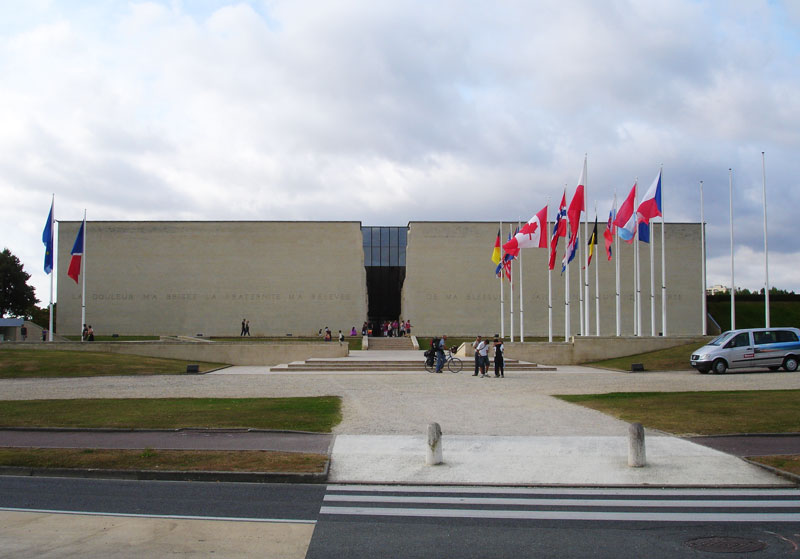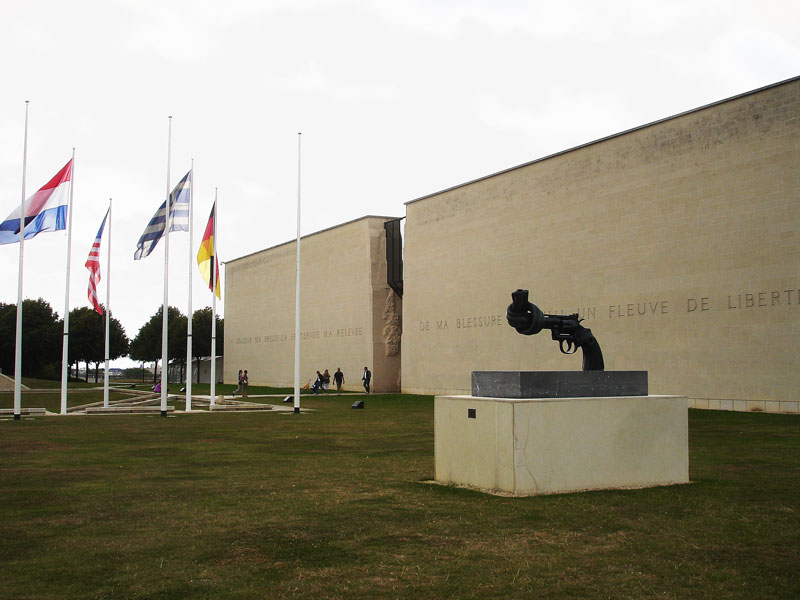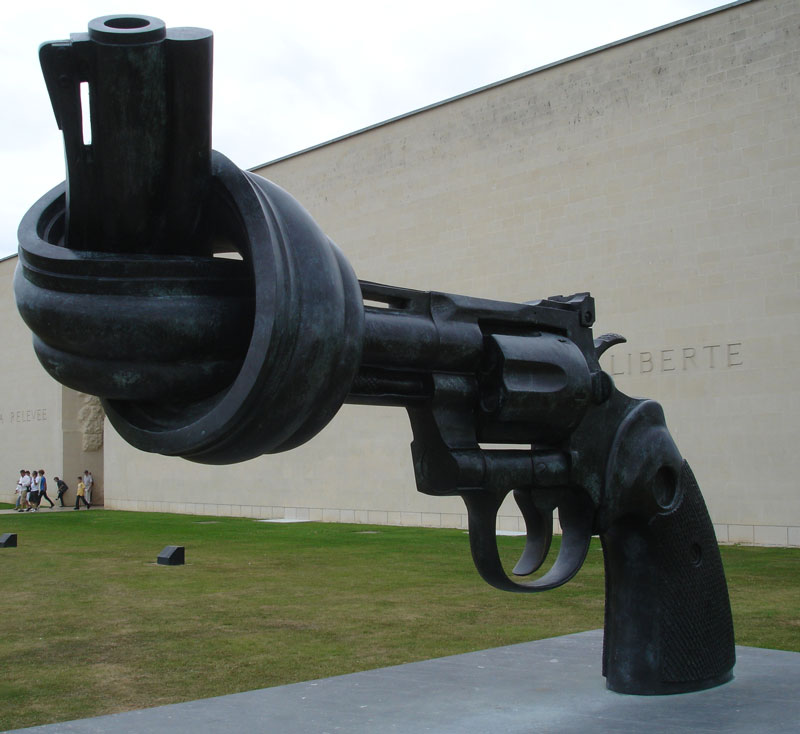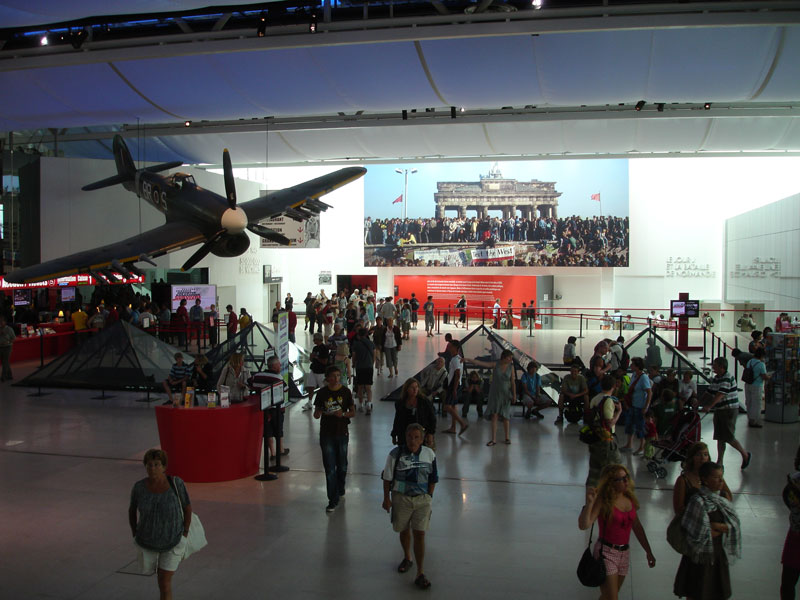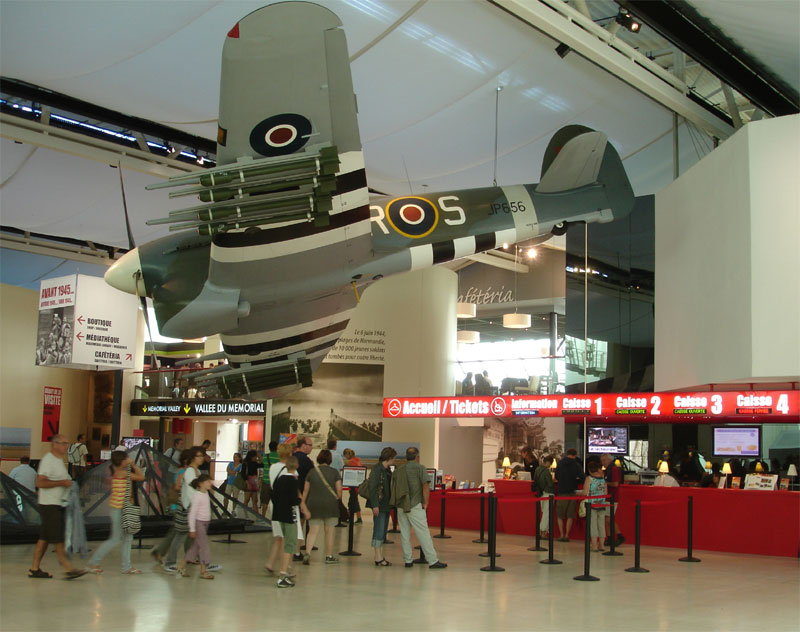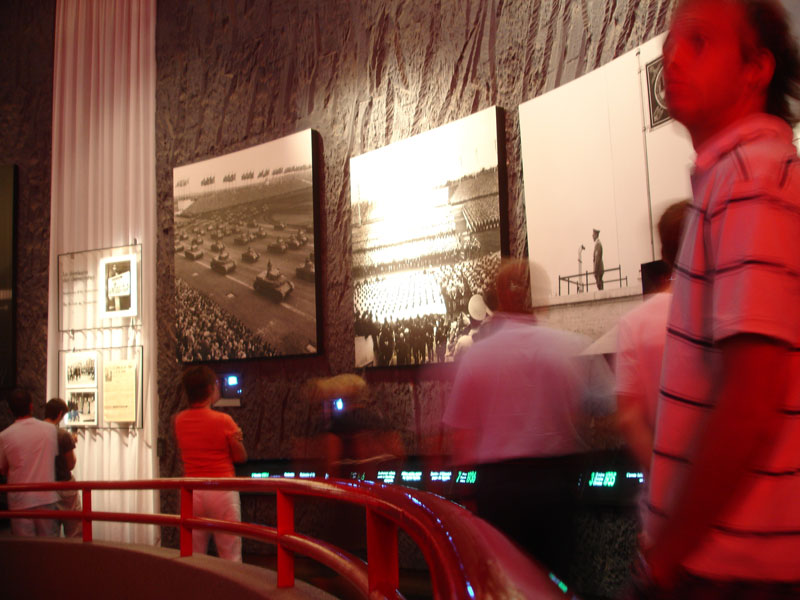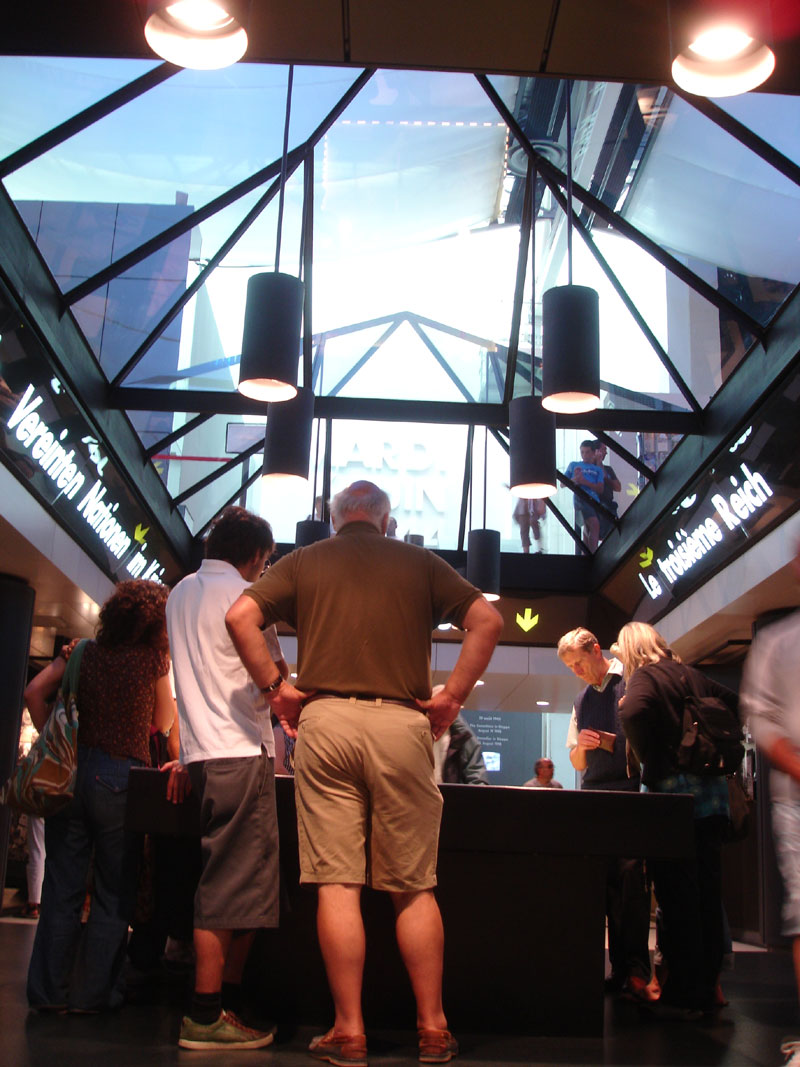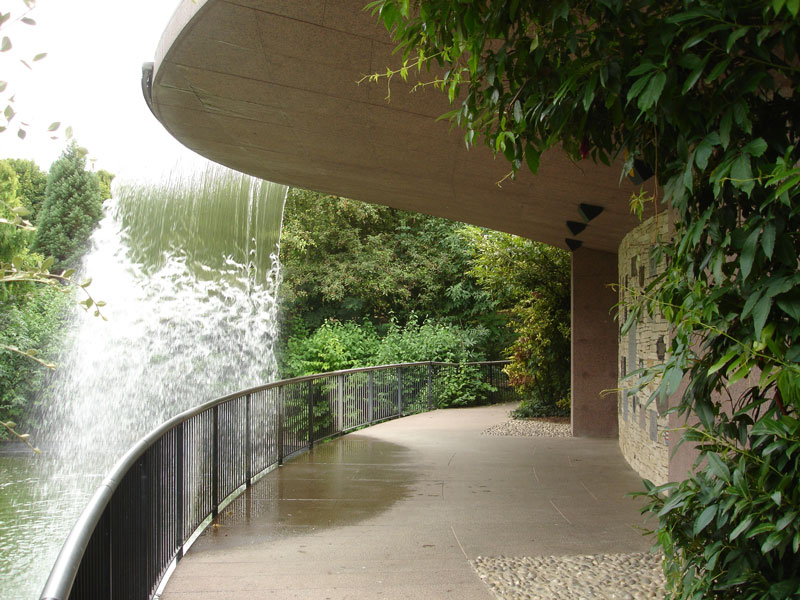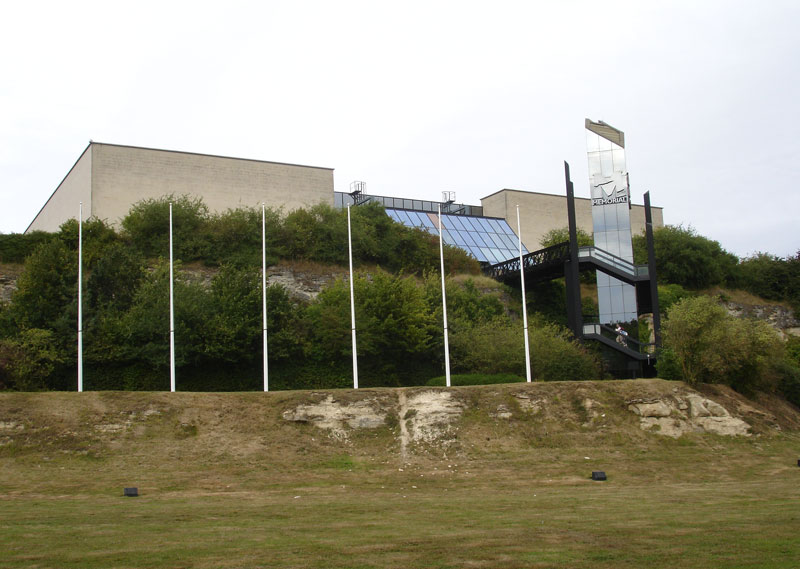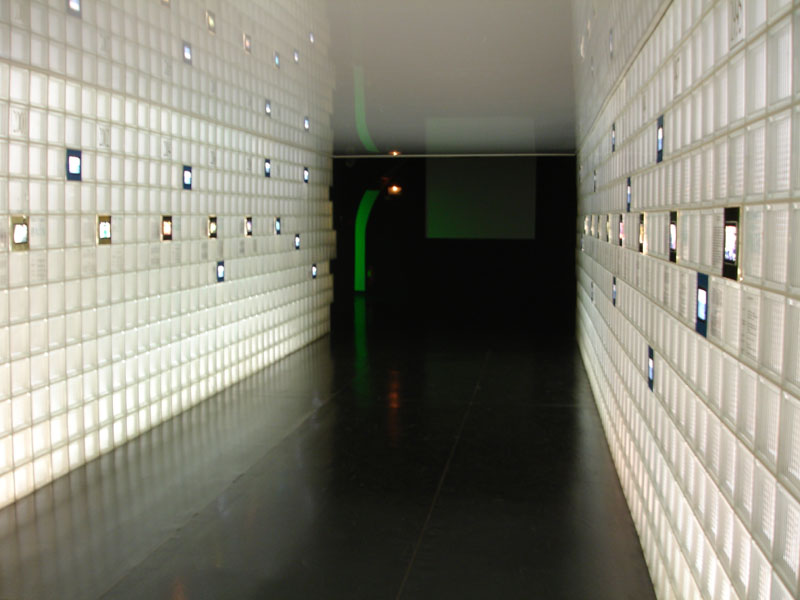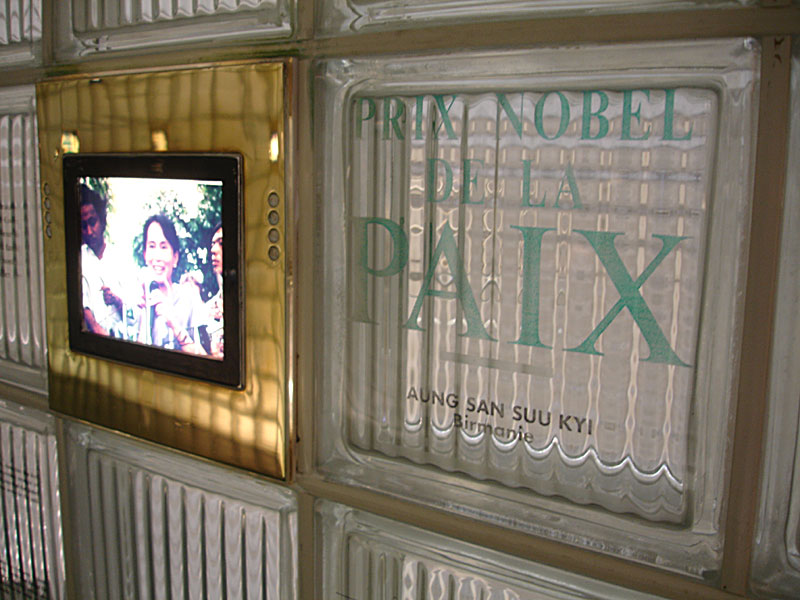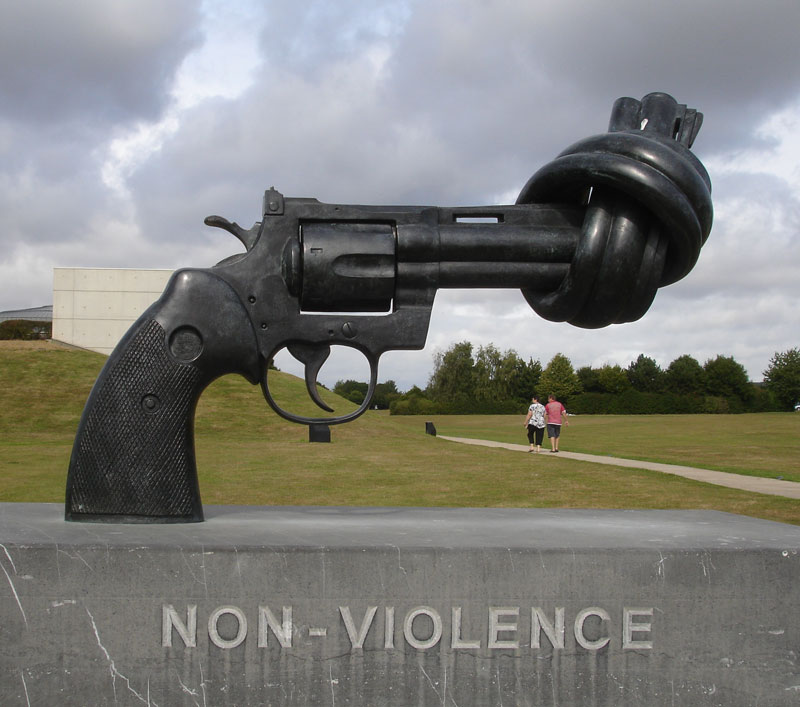Le Mémorial in Caen - Narratives of War and Peace
By: Jon Brunberg | posted: 11/18/2009 2:36:54 PM
This is the first in a series of reports from a trip to the D-Day landing beaches in Normandy and its surroundings that was made by the author in August 2009.
When allied forces finally captured Caen on July 20, 1944, after a fierce battle, much of the city had been destroyed by their bombing campaign, over 1,000 civilians had lost their life and half of a population of 60,000 had been left homeless in a shattered city that it took two decades to reconstruct. Caen paid a high price for the liberation from German occupation.
The destruction of the city and the trauma suffered by its population is said to be one of the reasons that its Mayor, and the Senator, Jean-Marie Girault, took the initiative to create a memorial museum with the ambition to present a rather different perspective on the history of World War II. As the original name of this institution - Musée Mémorial de la Paix (the Memorial Museum for Peace) – reveals, it would be another type of institution compared to the common historical, military museum, an institution with the ambition to make visitors reflect upon peace and democracy in the light of the events of WWII and beyond. The museum was inaugurated by François Mitterrand in 1988, and according to information on its website, over 8 million people have visited since, which makes it one of the biggest tourist attractions in Normandy. It has become a natural starting point for those who want to visit the D-Day landing beaches and the museum offers a variety of guided tours to places of interest in regards to the invasion, of which some lasts two days.
Le Mémorial is located in a park on the outskirts of Caen a 45 minutes walk from the city centre. The first impression of the building is that of a huge, compact block of concrete, with a deep, vertical breach in the middle which is said to symbolise the breakthrough of the German ”Atlantic Wall.” This is the only opening in the façade and it ends in the main entrance. It´s a bit like entering a cave.
On a concrete plinth some fifty metres to the right of the entrance stands a copy of Carl Fredrik Reuterswärd´s famous bronze-cast sculpture Non-violence, of a pistol with its barrel in a knot, which communicates to the visitor that the intention of this site is to promote peace. Its position, however, can hardly be described as central and this is the first indication of what I believe is an ambiguity in the museum´s position in regards to the issues it presents.
The first detail that catch your eye on entering the lobby, which is really more of a huge hall, is a Hawker Typhoon fighter that hangs looming over the information and ticket desk. A lot of people are already here waiting in line for tickets or heading for one of the entrances to the exhibitions, which are divided between the history of World War II and the invasion of Normandy, in the original building, and the cold-war era and temporary exhibitions in a newer section. Two cinemas show hour-long films about the invasion several times a day.
The architecture has its spectacular moments, for example, the start of the World War II exhibition, where you are submerged in a spiralling movement down into the building´s basement trough a huge, spherical, dark room that symbolises the entry of a dark era; the war itself. This exhibition is indeed ambitious, and covers many significant aspects and events of the war, with a special focus on the invasion of Normandy. There are plenty of models, unique objects and multimedia presentations. The atmosphere is tense.
The cold-war era exhibition is a bit more ”modern” in style. It´s mostly at ground level, and has quite a different atmosphere in comparison. If the keyword for the fist exhibit was “dark” the keyword for this section must be “cold.” I must admit though that I did not have time enough to really take in all the information displayed in this exhibit, and that I had to skip the temporary exhibitions. To be able to see everything that Le Memorial has to offer, you really need more than the six hours I spent there.
That ambiguous feeling I had at the entrance keeps lingering on after seeing these two exhibits and one of the films. Le Mémorial is repeatedly referred to as an institution for peace in its visitor- and press information and this is also a phrase that is repeated in many news articles I´ve read about it. But is this stance really reflected in the museum”s program? It is not as the issue of peace is absent in the exhibitions, you will find it for example in the section about the lead up to World War II, and it is not that war is glorified in any way. But I find that the focus, with few exceptions, is very much on the military campaigns, and I can´t stop thinking that there could be another narrative to relay here, a narrative that is not that of a failing peace inevitably followed by global war, but an attempt to explain and map the peace efforts and peace movements of the 19th century, and weave that into the war exhibitions to create a different narrative.
The museum points to the Nobel Peace Prize Gallery as its main, permanent exhibition that deals exclusively with the issue of peace. The gallery, which opened in 1991, is located in an old bunker below the main building, at the foot of the cliff where the museum sits. It is basically a long, underground corridor in which all Nobel Peace Prize Laureates are presented. But, with its location underneath the main museum, it feels quite disconnected from the historical exhibitions.
My critique must of course be seen in the perspective of my limited time spent here and the fact that I may have missed some important information. When I now look at the program for 2010 I find, for example, a very interesting series of seminars about human rights coming up in the beginning of the year. As an historic exhibition, Le Mémorial is indeed worth a visit, and I can really recommend it as a starting point if you intend to visit the D-Day beaches. The exhibitions will give you a detailed background of the events and the bookshop offers plenty of maps and books that will help you to get the most out of your trip. If you only have a couple of hours at your disposal I recommend that you skip the films and go directly to the historical exhibitions. And don´t forget to visit the Nobel Peace Prize Gallery. Even though that exhibit, in my opinion, lacks an overview of the topic of peace and the movements focused on pursuing it, it is a stark remainder of the great efforts to create peace and defuse conflict that are made throughout the world every day.
MORE INFORMATION
Official website (most information in French)
Museums for Peace web site
Article by Benjamin C. Brower in History and Memory, Vol. 11, 1999
Part of the series ''D-Day Memorialization''
A series of articles that explores memorials, museums and cemeteries of Normandy.
Editorials
• New series: Memorialization at the D-Day beaches
Features
• Le Mémorial in Caen - Narratives of War and Peace• Contrasting impressions on Omaha Beach
Related Memorials
• Caen Mémorial• The American Cemetery and Memorial in Colleville-sur-Mer
• The Braves - Les Braves
• La Cambe German war cemetery
• British Cemetery and Memorial in Bayeux

